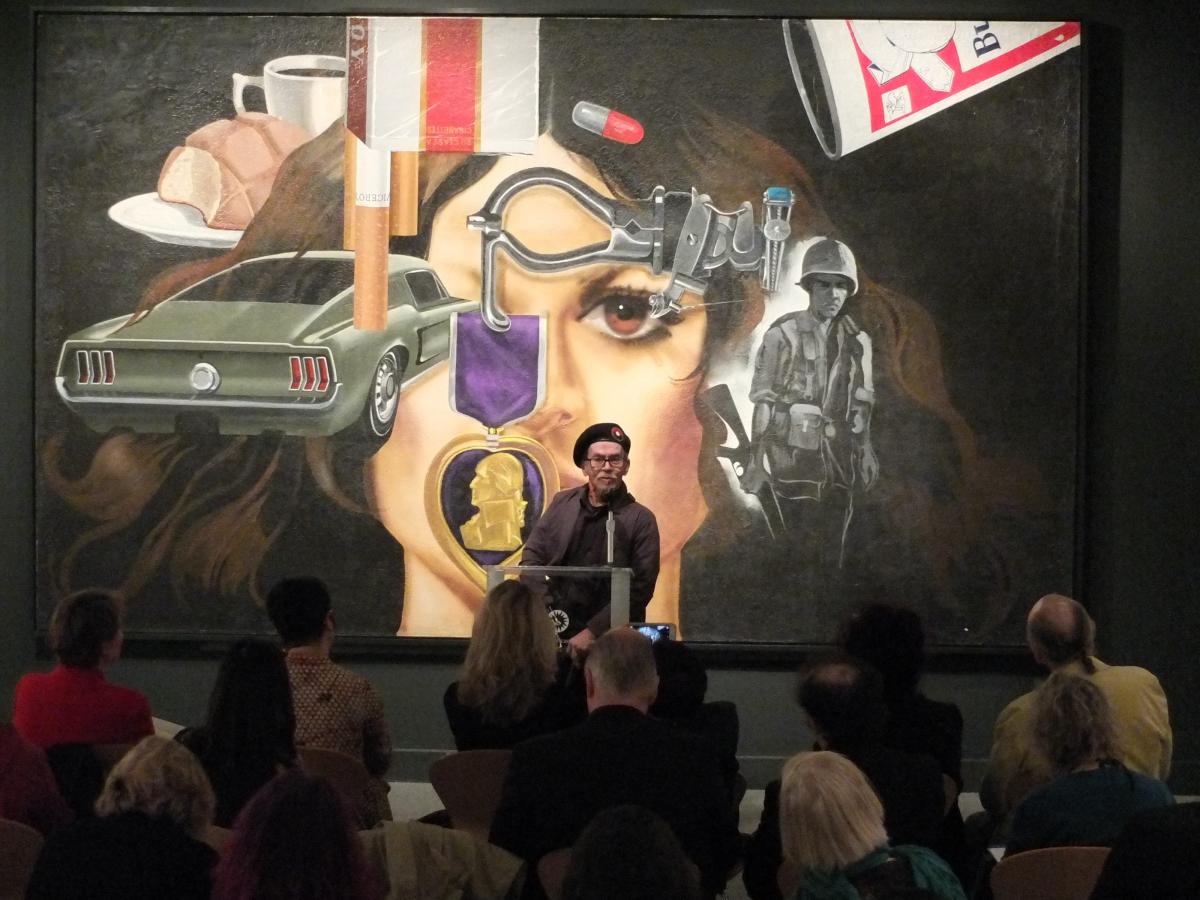
On February 13, 2023, we lost a beloved and important figure of American art, the painter Jesse Treviño. He was 76.
Working in a photorealist style, Treviño dedicated his career to capturing and celebrating Chicano life and history—especially the people and places of the neighborhood in which he grew up, on the West Side of San Antonio. Since the 1990s, he also created major works of public art. As I learned when I visited San Antonio to meet the artist in 2018, Treviño’s dazzling paintings and mosaics enliven multiple facades across the city. He was truly—and visibly—a pillar of his community.
Treviño had a long-standing connection to the Smithsonian American Art Museum. In 1994, the museum presented a solo exhibition of his work and acquired two paintings, Mis Hermanos (1976) and La Tienda de Elizondo (1993). Characteristic for the artist, these paintings are rooted in Treviño’s personal experiences and cultural perspective as a Chicano. La Tienda de Elizondo depicts a neighborhood general store—an anchor institution of everyday life—while Mis Hermanos shows the artist and his six brothers at a family gathering (Jesse is pictured second from the left, in the rear). More recently, a third work, the print Los Santos de San Antonio (1980) joined SAAM’s collection.
Treviño began pursuing this kind of subject matter after returning from his service in the Vietnam War. He was gravely injured in Vietnam in 1967 and, as art historian Rubén Cordova has written, “a Chicano artist was born out of a near-death experience in a Vietnamese rice paddy.” Trevino recalled that as he lay injured, he thought of “my family, my mom, and my neighborhood... everything I cherish.” He realized that, before the war, he had “just painted whatever my teachers told me to paint... I had never painted my mother or my brothers. I’d never seen museum-quality paintings of the barrio.” When he came home, he was determined to make those paintings.
To do so, Treviño had to overcome enormous challenges: in late 1970, complications from his injury made it necessary to amputate his right arm—his painting arm. Slowly and painstakingly, Trevino learned to paint with his left hand, regaining his craft and confidence. The completion of the enormous Mi Vida (1971-73) signaled Treviño’s rebirth as an artist. Eight feet high and fourteen feet long, the painting was executed directly on the wall of the artist’s bedroom and later extracted.
In 2019, we included Mi Vida in Artists Respond: American Art and the Vietnam War, 1965 to 1975, an exhibition at SAAM that examined the contemporary impact of the Vietnam War on U.S. art. Trevino’s haunting, hallucinatory work anchored the final gallery of the show, stopping visitors in their tracks.
As its title suggests, Mi Vida is a kind of self-portrait. Front and center, Treviño depicted his prosthetic arm—the dominant fact of his postwar life. Dangling from its hook is his Purple Heart medal, the official acknowledgment of his sacrifice. The green Ford Mustang on the left is another compensatory item: it portrays the artist’s first car, which he bought using his disability pay. To the right is a ghostly image of the young Treviño as a soldier, his body still intact. Arrayed above are a pan dulce and a cup of coffee, cigarettes, a painkilling pill, and a can of beer—all things ingested to soothe, relieve, and numb. Finally, looming behind the other images is the oversized face of a young woman, based on Treviño’s memory of a high school friend who had since died in a car accident. Her intense visage is lucid but mysterious, confronting the viewer from either the artist’s past or the afterlife.
It was in planning Artists Respond that I got to know Treviño, first visiting him in San Antonio and later welcoming him to Washington, DC, for the opening. At the press preview, Treviño was among the artists who gave remarks. It was so striking to see him standing at the podium in front of Mi Vida, this searing chapter of his past arrayed behind him. Although it was clear that Treviño faced health challenges, he also seemed indomitable. He was a seemingly ordinary man who accomplished extraordinary things through the power of his humanity.





















